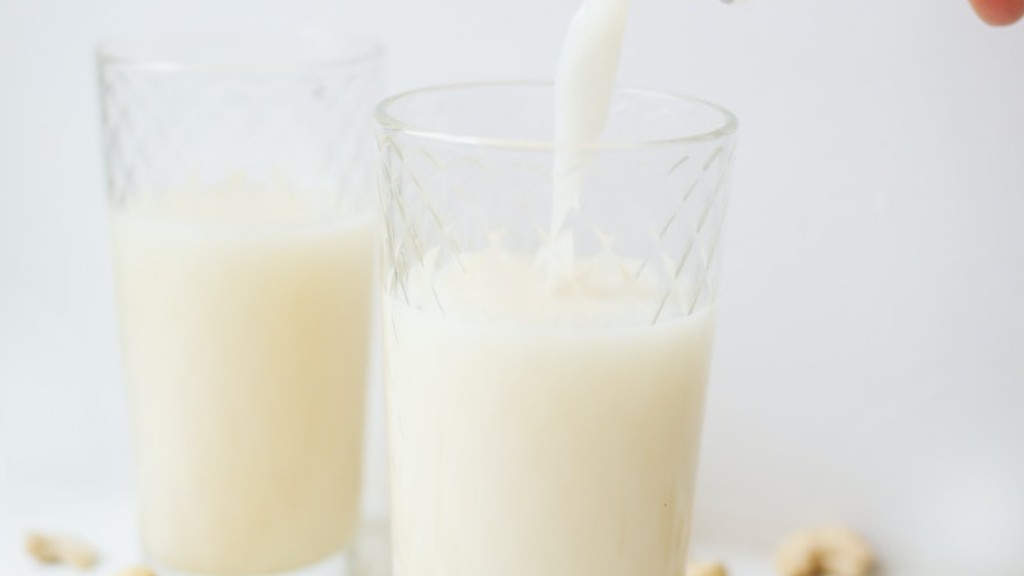Can I Use Evaporated Milk To Make Buttermilk?
If you’re missing the tart flavor of buttermilk in your recipes, you may be able to use evaporated milk as a substitute. Buttermilk is produced by adding lactic acid bacteria to low-fat milk. Evaporated milk can provide similar results, but it’s important to understand the potential risks.
Dairy-based buttermilk is a unique product, but it can be made using other ingredients. Evaporated milk is a popular substitute for regular milk in baking, thanks to its ability to provide a creamy texture without the added fat. While it’s true that evaporated milk can help give a dish a smooth, creamy texture, it’s important to note that its flavor and acidity are not quite the same as buttermilk.
Evaporated milk is produced by boiling off part of the water from whole milk. This process creates a product that is thicker and sweeter than regular milk, but it also has a distinctly different flavor because much of the lactose is lost during the process. Evaporated milk does not contain any lactic acid, so it cannot produce the same tangy flavor and other beneficial properties that make buttermilk so popular.
However, there are a few ways to use evaporated milk to create a buttermilk-like product. The most popular method involves adding an acidic ingredient, such as lemon juice or vinegar, to the evaporated milk. This helps simulate the acidic flavor of buttermilk and can provide a similar texture. It’s important to note, however, that the flavor and texture of the dish you create may not be the same as using buttermilk.
Another option is to add a small amount of cream of tartar to the evaporated milk. Cream of tartar is a commonly used acid ingredient in baking, and when it’s added to evaporated milk, it can provide a tart flavor and a creamy texture. Keep in mind, however, that this technique is only suitable for desserts and baked goods. For savory dishes, such as mashed potatoes or fried chicken, you’ll need to use an acidic ingredient such as vinegar or lemon juice.
It’s important to note that using evaporated milk as a substitute for buttermilk can cause some changes in the texture and flavor of your dish. Evaporated milk tends to be sweet, so it won’t provide the same tangy flavor as buttermilk. Additionally, the texture of the final product may be slightly different, as the thickness of evaporated milk is not the same as that of buttermilk.
There are a few benefits to using evaporated milk in place of buttermilk. Evaporated milk is usually easier to find and is less expensive than buttermilk, so it can be a good alternative for those on a tight budget. Additionally, evaporated milk is shelf-stable, so it can be stored for long periods of time without spoiling.
Understanding the Shelf Life of Evaporated Milk
When purchased in cans, evaporated milk typically has a two-year shelf life. Once opened, the milk should be kept in an airtight container in the refrigerator and used within a few days. Additionally, evaporated milk can be frozen for longer storage. It should be placed into an airtight container and frozen for up to six months.
The shelf life of canned evaporated milk can be extended if it is stored in a cool, dark place. It should not be exposed to direct sunlight or temperatures above 75°F (24°C). Additionally, the can lid should be tightly sealed at all times.
It’s important to make sure the evaporated milk hasn’t been opened or damaged before using it. Always check the expiration date, and if the can is open or dented, discard the milk immediately. Additionally, be sure to shake the can before opening to distribute the cream and avoid lumps.
Nutrition Facts of Evaporated Milk
Compared to cow’s milk, evaporated milk is higher in fat and sugar. A single cup (240 mL) of cow’s milk contains 8 grams of fat and 12 grams of sugar, while the same amount of evaporated milk contains 11 grams of fat and 22 grams of sugar. While evaporated milk can provide some beneficial minerals and vitamins, its higher fat and sugar content make it unsuitable for those who need to limit their daily fat and sugar intake.
Benefits Of Buttermilk
Buttermilk is produced by adding lactic acid bacteria to low-fat milk. This process lowers the pH of the milk and increases the acidity. Buttermilk is rich in vitamins, minerals, and probiotics. The probiotics in buttermilk can help support gut health and digestive functioning, and some research suggests they may also help reduce inflammation. Buttermilk is also high in calcium, potassium, and vitamin B12.
In addition to its health benefits, buttermilk is a popular ingredient in baking and cooking. The lactic acid in buttermilk helps break down gluten in dough and gives baked goods a more tender texture. It’s also often used in savory dishes, such as mashed potatoes and fried chicken, to provide a tangy flavor.
Making Buttermilk At Home
If you don’t have access to store-bought buttermilk, you can make it at home using a few simple ingredients. The most popular method is using raw milk and vinegar or lemon juice. To do this, add one tablespoon of vinegar or lemon juice to one cup of raw milk. Let the mixture sit for 10 minutes, and it’s ready to use. You can also make vegan buttermilk using a plant-based milk and vinegar or lemon juice.
Another popular method is to use yogurt. This is an easy way to create a buttermilk-like product, as yogurt already contains lactic acid and probiotics. To make yogurt-based buttermilk, mix one cup of yogurt with one cup of water. Let the mixture sit for 10 minutes, stir well, and it’s ready to use. Yogurt-based buttermilk is suitable for use in both baking and cooking.
Safety Considerations
When using homemade buttermilk or evaporated milk as a substitute for buttermilk, it’s important to consider any potential health risks. Home-made buttermilk does not contain any probiotics, which are beneficial for gut health and digestion. Additionally, evaporated milk may be contaminated with harmful bacteria if it has been stored incorrectly or left out in warm conditions.
It’s important to note that any homemade food products should be stored in the refrigerator and used within a few days. If the product is left out at room temperature or in warm conditions for an extended period of time, it should be discarded. Additionally, make sure that any utensils used to prepare the food are clean and sanitized.
Can I Use Evaporated Milk In Place of Buttermilk?
In summary, while it’s possible to use evaporated milk as a substitute for buttermilk, there are some potential risks. Evaporated milk is thicker and sweeter than buttermilk, so it won’t provide the same flavor and texture. Additionally, evaporated milk does not contain any lactic acid or probiotics, so its use should be limited to baking and other non-savory dishes.
For those who do not have access to store-bought buttermilk, they can make a similar product at home by combining raw milk and vinegar or lemon juice. Additionally, yogurt-based buttermilk can be made with yogurt and water. It’s important to note that any homemade food product should be stored in the refrigerator and used within a few days.




